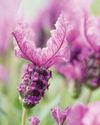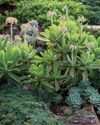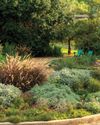
The key characteristic of these gardens is overly moist, waterlogged soil that creates the perfect conditions for a specific subset of plants – looking mostly unfamiliar and sometimes quite peculiar – that are not commonly found in standard backyards. Bog gardens are usually found in low-lying areas near lakes and rivers, but one-of-a-kind bog garden plants can be easily grown in almost any climate and any garden by following a few simple steps, giving you an even greater selection of plants to choose from.
LAYING THE GROUNDWORK
Bog gardens are best planted during the warmer summer months to give the plants enough time to settle in before winter. That pesky area of your garden that has terrible drainage and is constantly waterlogged is the perfect place to transform into a bog garden, but if you have managed to avoid that problem you can still create your own bog garden:
Mark an outline where you want your bog garden to be, ensuring it is in a sunny area (at least 5 hours a day) and away from shady trees.
Dig a hole 30 – 60cm deep and line it with a pond liner. Poke holes around the perimeter of the bog, 15 – 20cm from the top. This will allow the top layer to dry out more and allow the bottom part of the bog to act as a reservoir. Although bog plants love water they can’t be left standing in water, like all plants, so these drainage holes are vital.
Fill the hole again with a mixture of the original soil and compost or potting soil to a 50:50 ratio. The deeper parts of the bog could even be filled with rubble or gravel to act as a reservoir.
Trim the remaining liner, leaving a small amount to allow for the bog garden to settle. This can be covered later with rocks or mulch.
Keep the soil well-watered for a week to establish the bog conditions.
هذه القصة مأخوذة من طبعة March 2020 من The Gardener.
ابدأ النسخة التجريبية المجانية من Magzter GOLD لمدة 7 أيام للوصول إلى آلاف القصص المتميزة المنسقة وأكثر من 9,000 مجلة وصحيفة.
بالفعل مشترك ? تسجيل الدخول
هذه القصة مأخوذة من طبعة March 2020 من The Gardener.
ابدأ النسخة التجريبية المجانية من Magzter GOLD لمدة 7 أيام للوصول إلى آلاف القصص المتميزة المنسقة وأكثر من 9,000 مجلة وصحيفة.
بالفعل مشترك? تسجيل الدخول

FIRE AND Feathers!
On a dreary winter's day, a screen of fiery and feathery leaves puts up a fight against dullness!

GET THE ladies in!
At this time of year, early-flowering shrubs vie with each other to get the most attention. We say: Trust those with female names for frills and butterflies. They go the extra mile to flower their hearts out.

Vegetable Soups and dumplings
Vegetables make the most delicious soups and classic combinations are always a winner.

Yummy sweet potatoes for your good health
Boiled, baked or braaied, sweet potatoes (Ipomoea batatas) are a delicious and healthy winter comfort food. Just a dollop of butter, a little seasoning and you are good to go.

Pretty and functional
If cooking is your main thing, you would probably be more interested in the culinary value of the three herbs and some of their varieties we are describing.

Dried Seedheads & Pods
Autumn and winter are the best times to see what flowers produce the best seedheads that can be left on the plants to feed the birds and bugs and for harvesting for dried arrangements.

SO MANY FACES and so many choices...
Whoever associated a Cotyledon orbiculata (pig's ear) with the ear of a pig obviously did not know about all the varieties and cultivars this species in the genus Cotyledon has.

COLOURFUL Cold Weather WINNERS!
If it comes to a vote, these dependable shrubs will be the top candidates for prime performance in winter and in other seasons...

What makes a garden sustainable?
It is interesting to note that the United Nations defines sustainable development as: “development that meets the needs of the present without compromising the ability of future generations to meet their own needs”.

Nurturing NATURE-The Story of Kraal Garden's Transformation
Nestled within Prince Albert's rustic embrace lies a gem that is a testament to the transformative power of human vision and nature's bounty.